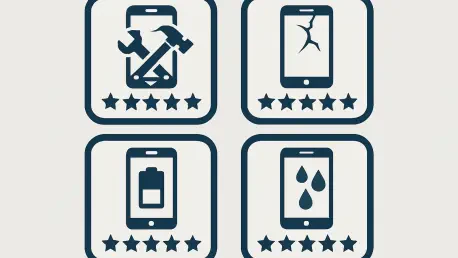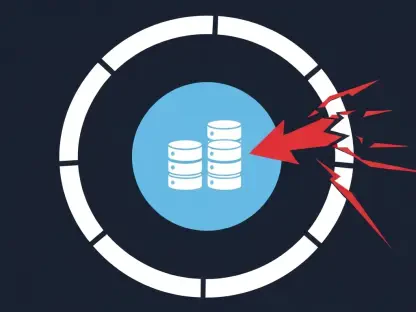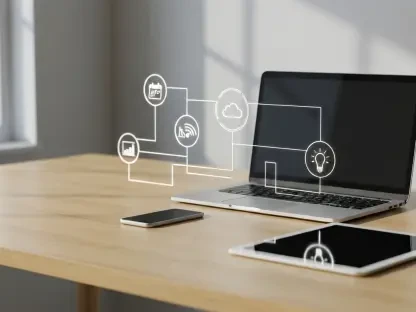I’m thrilled to sit down with Oscar Vail, a renowned technology expert whose deep insights into emerging fields like quantum computing, robotics, and open-source projects have made him a trusted voice in the industry. With his finger on the pulse of the latest advancements, Oscar is the perfect person to help us unpack the new EU labeling requirements for smartphones, which focus on durability, repairability, and energy efficiency. Today, we’ll dive into how these standards impact consumers, what the ratings mean for popular devices, and the broader implications for smartphone design and usage.
How do these new EU labeling requirements for smartphones aim to change the way we evaluate and purchase devices?
These new EU rules, which kicked in mid-this year, are all about transparency. They require standardized testing for smartphones sold in the region, focusing on key areas like durability, repairability, and energy efficiency. The idea is to give consumers clear, comparable data through labels—think of it like nutritional facts on food packaging. Now, when you’re shopping for a phone, you can see hard numbers and ratings on how well a device holds up to drops, how easy it is to fix, and how long the battery lasts, both per charge and over its lifespan. It’s a push to help people make informed choices and, honestly, to nudge manufacturers toward designing more sustainable and durable products.
What kinds of tests are smartphones subjected to under these new regulations?
The testing is pretty comprehensive. For durability, there are drop and tumble tests to simulate real-world accidents—phones are literally dropped multiple times to see how many falls they can withstand before breaking. Then there’s repairability testing, which looks at how easy it is to access and replace components like the battery or screen. Energy efficiency tests measure how well a phone manages power, including endurance per charge and how many charge cycles the battery can handle before degrading. These tests are standardized across all brands, so you get a fair comparison, though some companies have raised concerns about the methodology, like small sample sizes or unclear test definitions.
Why do you think repairability scores are becoming such an important factor for smartphone users?
Repairability is huge because it directly affects the longevity and cost of owning a phone. If a device is hard to repair, a cracked screen or dead battery could mean shelling out for a whole new phone instead of a quick fix. High repairability scores mean easier access to parts and simpler designs, which can save users money and reduce electronic waste. It’s also a growing concern as people become more aware of sustainability—keeping a phone longer by repairing it is way better for the environment than tossing it after a couple of years. These EU labels spotlight which brands prioritize this, and it’s starting to shape consumer expectations.
Looking at specific ratings, the iPhone 17 Pro Max scored a Class B for fall damage, surviving 180 falls. How does that translate to everyday use for the average person?
A Class B rating with 180 falls means the iPhone 17 Pro Max is decently tough but not top-tier in durability. In practical terms, it can handle a fair number of accidental drops—say, slipping out of your pocket or off a table—before serious damage kicks in. For most people, who might drop their phone a few times a year, this is reassuring. But compared to devices with a Class A rating, which survive up to 270 falls, it’s less ideal for someone clumsy or working in rugged conditions. It’s a step up from its predecessor, which only managed 90 falls, so there’s progress, but it shows there’s still room for improvement in design or materials.
On the energy efficiency front, the iPhone 17 Pro Max earned a Class A rating with a 53-hour endurance. What does this tell us about how far smartphone battery tech has come?
A Class A rating with 53 hours of endurance is impressive—it means the iPhone 17 Pro Max is squeezing a lot of life out of every charge, likely through optimized hardware and software working together. This kind of efficiency shows how far we’ve come in battery tech; a decade ago, getting a full day out of a phone was a struggle, and now we’re seeing multi-day usage under normal conditions. It outpaces competitors like the Galaxy S25 Ultra at about 45 hours and the Pixel 10 Pro XL at around 49 hours, both rated Class B. It’s a sign that manufacturers are focusing not just on bigger batteries but on smarter power management, which is critical as phones handle more demanding tasks.
There’s a notable difference in battery charge cycles among these devices, with the Galaxy S25 Ultra rated for 2,000 cycles compared to 1,000 for others. How does this gap impact users over the long term?
That difference in charge cycles is significant. A charge cycle is roughly one full recharge, so 2,000 cycles on the Galaxy S25 Ultra means the battery can theoretically last twice as long before its capacity drops noticeably—think four to five years of daily charging versus two to three for a 1,000-cycle battery. For users, this translates to a longer usable life before needing a replacement, which saves money and hassle. The gap likely comes down to battery chemistry or design choices—some brands prioritize durability over initial capacity or efficiency. For someone who keeps their phone for years, this could make a big difference in overall value.
Comparing models like the iPhone Air and Galaxy S25 Edge, how do you explain the Air matching the Edge’s endurance despite a smaller battery?
The iPhone Air pulling off the same 40-hour endurance as the Galaxy S25 Edge with a smaller battery—3,149mAh versus 3,900mAh—is a testament to optimization. It’s likely a mix of efficient chip design, software that minimizes background power drain, and display tech that sips energy. Apple has a knack for tuning their ecosystem so every component works in sync, which can offset raw battery size. A Class A efficiency rating for the Air backs this up. It shows that brute force—packing in a huge battery—isn’t the only way to achieve long runtime, and it’s a trend we’re seeing more as manufacturers balance size, weight, and performance.
What’s your forecast for the future of smartphone durability and efficiency standards as these EU regulations continue to evolve?
I think we’re just at the beginning of a major shift. As EU regulations tighten and consumer awareness grows, I expect durability and efficiency to become core selling points, not just nice-to-haves. We’ll likely see manufacturers investing heavily in tougher materials and modular designs for easier repairs—think phones built to last five or more years without breaking the bank to fix. On the efficiency side, advancements in battery tech, like solid-state batteries, could push charge cycles and endurance even further. But there’s also a chance for pushback; if testing standards don’t get refined, some brands might focus on gaming the metrics rather than true innovation. Overall, though, the pressure is on to build sustainable, long-lasting devices, and that’s a win for everyone.









